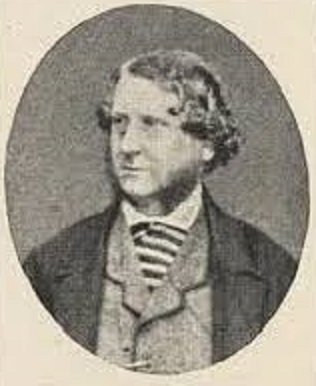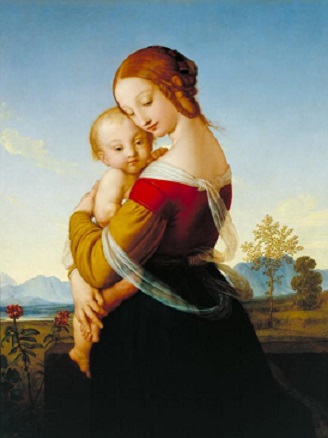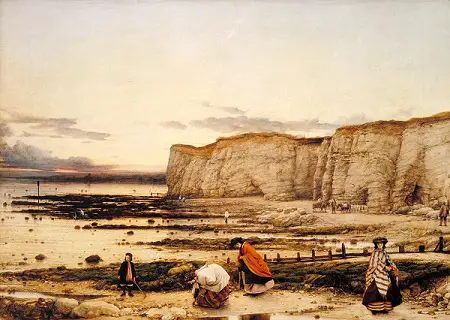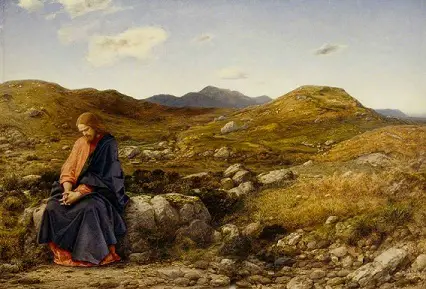William Dyce(1806-1864) was a Scottish Painter and took a keen interest in the formation of the education of the state art in Great Britain. He was also indulged with the Pre-Raphaelite Brotherhood and played a vital role in their early promotions. He became well-known for his religious piece of work.
Early Life and Career of William Dyce
William Dyce was born in the Marischal Street of Aberdeen in 1806 as the third son to his parents. His father Dr. William Dyce of Fonthill and Cuttlehill was a noted physician and had achieved a lot in Scientific research area. His mother was the daughter of James Chalmers who belonged to the family that had received great respect and honor for centuries in Aberdeen.
He received his education at Marischal college, then at University of Aberdeen and finally achieved his M.A. degree when he was only 16. His father wanted him to study medicine or theology. He studied both but for his reference in the art of painting. He secretly studied art and sold out some of his collection. With this, he was able to collect enough amount so that he could get himself in the trading smack of London.

He was introduced to the president of Royal Academy and by seeing his love for art, the president himself seeks his father’s permission t let him study art. He then started making drawings for the Egyptian Hall and afterward began his career as an apprentice at the School of Royal Academy.
But he was unsatisfied with the system there and hence when he got the opportunity to visit Rome on the offer given by Alexander Day, he accepted it. He started to work with Day in 1825 and stayed for 9 months in Rome focusing on the works of Nicholas Poussin and Titian.
After a year in 1826, he returned back his home in Aberdeen and decorated his father’s house. He exhibited his first picture “Bacchus nursed by the Nymphs of Nysa” at the Royal Academy of London in 1827. He returned to Rome in the same year to develop the Pre-Raphaelite form of art. With this, he is said to start this movement in the English School of Paintings.
In 1828 after returning back to Aberdeen he painted “Madonna and child” and other similar subjected paintings. But as he didn’t receive much appreciation, he took a break from painting and moved to his quest for science. Not much later, he received Blackwell Prize for his essay on Electromagnetism at the Marischal college.
Later he received a request from Mrs. Mackenzie to make a copy of the portrait of his father which was previously made by Thomas Lawrence. And this indulged in him the interest for making portraits and he got engaged in the same.
He settles in Edinburgh for 7 years starting from 1830 and made around 100 portraits which were simple as well as very lucid and attractive. They were some of his greatest qualities of work.
Achievements of William Dyce
- In 1832, he was selected as a fellow at Edinburgh for the Royal Society and in 1835 he became an associate of the Royal Scottish Academy.
- He was offered an honorary rank after he settled in London.
- Dyce was consulted by the trustees for manufactures at Edinburgh to find the best ways to apply design to manufacturing. So he proposed a scheme for their school improvements.
- In 1840 he became the secretary and director of the council which was made for the remodeling of the school designs.
- In 1843 he was delegated as the provincial school inspector which he resigned after a year and a half.
- In 1844 he was selected as the professor of the fine arts in King’s College of London. He also became an associate of the Royal Academy in the same year.
- In 1848, he became a full member of the Royal Academy.
- In 1851, Dyce was appointed as a juror of the Great exhibition to judge on ” Iron and general hardware” and in 1862 he was appointed as a juror to judge “Stained glass and glass used in building and decoration.”
Works by William Dyce
Some of the works by William Dyce are
- The Descent of Venus in 1836
- Francesca da Rimini in 1837
- Jessica in 1843
- Joshua shooting the Arrow of Deliverance in 1844
- The Meeting of Jacob and Rachel in 1850
- Titian’s First Essay in Colouring in 1857
- Beatrice in 1859
- David in the wilderness 1860
However, three of his paintings were very well portrayed and he received a lot of appreciation for them which are
-
“Madonna and the Child” in 1838

Madonna and the Child
This picture depicts Dyce as the strict follower of Pre-Raphaelite and the scene modeled here is based on the Raphael’s Madonna and child which were the main subject of the early 1500s. When Dyce made his journey to Italy, he became knowledgeable about the Nazarenes art, which is the art of a group of painters who took their inspiration by the painting of the 15th-century religious art.
-
“Pegwell Bay, Kent- A Recollection of October 5th, 1858”

Pegwell Bay
It depicts the family of Dyce who were enjoying on the beach at some coastal resort of Kent. This painting is famous as it shows Donati’s comet seen in the sky. During this period the scientific innovation overthrew the religious beliefs. The enormous space and the Earth’s age is just revealed with the comet in the sky when people did not believe in any new discoveries of science.
-
“The Man of Sorrows” in 1860

The Man of Sorrows
The painting is one of the pair with David in the Wilderness. It shows the sufferings of Jesus who is withdrawn from the worlds and is indulged in the preparations of his arriving spiritual trials. Instead of showing any Holy Land, he presented here a rocky landscape of the Scottish Highlands to offer the changes for the interpretation of Christian to accept new terms of Geology and understanding of science.